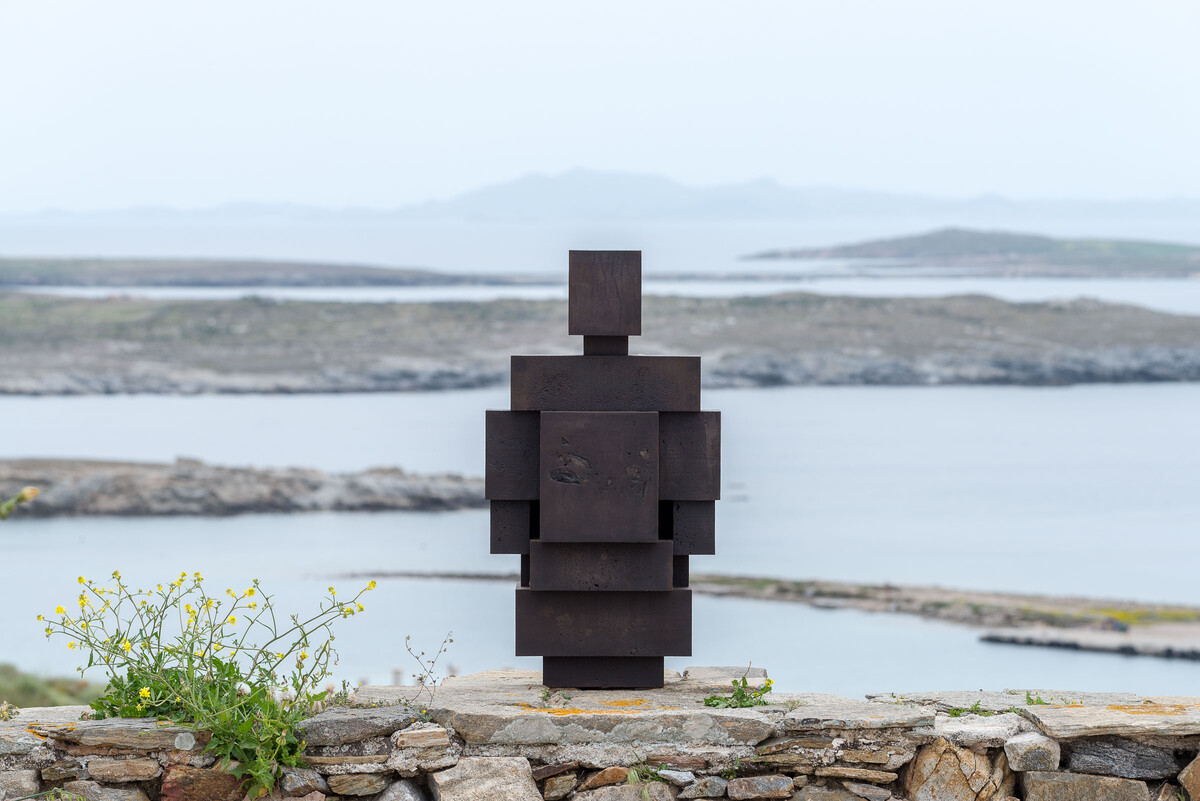SIGHT on the sacred island of Delos
Presented by NEON in collaboration with the Ephorate of Antiquities of Cyclades
May 2–October 31, 2019
NEON is proud to present SIGHT an unprecedented site-specific exhibition by British artist Antony Gormley, in collaboration with the Ephorate of Antiquities of Cyclades, on the archaeological site and the Museum of Delos Island.
This project by the renowned sculptor marks the first time that an artist takes over the archaeological site of Delos since the island was inhabited over 5,000 years ago and is the first time a contemporary art installation has been unanimously approved by the Greek Archaeological Council to take place in Delos. SIGHT is specially conceived to resonate with the statuary, temples, squares, vistas and the topography of the island of Delos. It is curated by Iwona Blazwick OBE, Director, Whitechapel Gallery and Elina Kountouri, Director, NEON.
During the past 40 years, Antony Gormley’s sculptures and installations have challenged our perception of space and the human body.
As an undergraduate at Trinity College, University of Cambridge, Gormley studied archaeology, anthropology and art history, equipping him with a deep understanding of the diversity of human cultures and their origins.
“I treat the body as a place encouraging empathic occupation of that which lies the other side of appearance: what it feels like.”
In this installation, Gormley repopulates the island with iron “bodyforms,” restoring a human presence and creating a journey of potential encounters. He has installed 29 sculptures made during the last 20 years, including five specially commissioned new works, both at the periphery and integrated amongst Delos’s archaeological sites.
The works animate the geological and archaeological features of the island: a granite rock in the middle of the Cycladic Islands in the Aegean less than 5 kilometres long and 1.5 kilometres wide. Its intertwined and contrasting identities, as both holy place and commercial town, combined with its topography and geographical location, made the island a singular and cosmopolitan Hellenistic town.
Mythology tells us its first name was A-Delos, meaning “the non-visible”—a floating rock with no fixed location. It became Delos, “the visible,” when Zeus arranged for Leto, his mortal lover, to find refuge there, safe from the wrath of his wife, the goddess Hera. When Leto gave birth to twins Apollo, god of light, and Artemis, goddess of the hunt, the island’s destiny and future prosperity was assured.
Historical narratives record that humans occupied Delos during 2500–2000 BC and remained through ancient and classical times up to 69 BC, when the majority of the inhabitants abandoned Delos. Today, with the exception of archaeologists safeguarding the island and scientific research, Delos is uninhabited.
Gormley reinterprets the function and purpose of sculpture, transforming the traditional statues and totems of the ancient world that once adorned public squares, temples and private dwellings into sites of empathy and imaginative projection. The first connection between visitors and the work is established before they even set foot on Delos. Approaching the rugged northwest coast, they catch sight of a lone figure (from Gormley’s series “Another Time,” 1999–2013), standing sentinel on a rocky promontory at the water’s edge. Two more works from the same series stand on Plakes Peak and on Mount Kynthos. Further sculptures are integrated with archaeological sites across the island, from the Stadium to the Theatre district and from the merchant stores to the Museum site.
His sculptures, taking naturalistic, cubic and more abstracted forms, either stand or lie on the ground, exposed to the elements. Interacting with the island’s topography, the works appear and disappear. Gormley establishes a physical and intellectual connection with our collective memory. He proposes a radical openness:
“Art is about reasserting our first-hand experience in present time.”
Visitors to Delos are invited to connect with time, space and nature, which inevitably link to our shared future. Gormley on Delos reminds us how central art is to the human story.
SIGHT is organized and commissioned by NEON and presented collaboration with the Ephorate of Antiquities of Cyclades.
NEON is a nonprofit contemporary art organization founded in 2013 by collector and entrepreneur Dimitris Daskalopoulos.
For more information visit neon.org.gr




